Tu-22 BLINDER (TUPOLEV)
With performance roughly similar to that of the American B-58 Hustler, the BLINDER was capable of supersonic dash and cruises at high subsonic speeds, At least three major variants of the BLINDER entered operational service in the Soviet Air Forces � a free-fall bomber, an ASM carrier, and a photo/electronic reconnaissance variant.
Development of the supersonic TU-22 bomber began after the start of production of the TU-16. During preliminary studies, OKB Tupolev considered three versions: a supersonic attack bomber "98", a long range supersonic bomber "105" and an intercontinental supersonic bomber "108". The first two required swept-wings while the "108" bomber had triangular wings. In the end, the "105" design served as the basis for the TU-22 while the design of the "98" was applied to the long range fighterplane TU-128. The "108" design was completely dropped. The original design drew heavily on the TU-16 and provided for four BD-5 or BD-7 turbojet engines. The angle of the swept-back wings was increased up to 45 degrees. The project was finally approved by the Soviet government in August 1954, despite numerous objections within the Communist Party leadership.
This supersonic medium-range bomber is a swept-wing aircraft with two engines positioned as the base of the tailfin. The low-mounted swept-back wings are tapered with square tips and a wide wing root. The landing gear pods extend beyond wings� trailing edges. Two turbojets engines are low-mounted on the tail fin, with round air intakes. This eliminated the need for a complicated boundary layer separation system in the intakes, but added a 15% weight penalty, and made engine maintenance much more difficult because of how high they were off the ground. The fuselage is tube-shaped with a solid pointed nose and a stepped cockpit. Tail flats are low-mounted on the fuselage, swept-back, and tapered with square tips. The fin is swept-back, and tapered with square tip.
The prototype of the "105" aircraft with BD-7M engines made its' first flight on 21 June 1958, but was subsequently extensively modified and upgraded. The Russians apparently had engine development problems early in the BLINDER program, and BLINDER prototypes were fitted with interim engines. In April 1958, even before the first flight, the decision was made to equip the aircraft with more powerful HK-6 engines and to build a second prototype with BD-7M engines. As development of the HK-6 engines was delayed, only the second prototype was actually built, which carried out its' first flight in September 1959. During testing, numerous problems arose, and a number of crewman were lost in crashes. Series production of this aircraft -- designated the TU-22 -- started at the plant Nr.22 in Kazan in 1959, where more than 300 TU-22 bombers were built through 1969. It entered operational service in 1962 and by 1970 there were 180 BLINDER aircraft in LRA service.
Several versions of the Blinder-bomber were built:
- Blinder A - Tu-22B -- Blinder A is primarily employed as a medium bomber dropping free-fall bombs, All of the ten 22B bombers were mainly used for training purposes. The aircraft also could be modified to serve as a tanker. Initially, converted TU-16Z planes served as tankers, but from 1972 on they were replaced by TU-22RM aircraft carrying new onboard avionics.
- Blinder B - Tu-22K -- The Tu-22K was equipped to carry one Kh-22 (AS-4 Kitchen ) 250-nm range air-to-surface The TU-22K carried a missile, and could also carry free-fall bombs. It carried out its' first tests in 1961 and deployment started in 1967 after conclusion of the testing phase.
- Blinder C -- In 1962 the maritime reconnaissance aircraft TU-22P was equipped with an air refueling system and received the designation TU-22PD. About 70 'Blinder-C' reconnaissance and electronic warfare aircraft were produced
- Blinder D - Tu-22U -- The - Tu-22B is a trainer version similar to Blinder A, though with a raised student cockpit.
- Blinder E - TU-22RDM -- Further upgrading in the 1980s lead to the TU-22RDM reconnaissance aircraft.
From 1965 on, all Blinder aircraft were equipped with an air refueling system, consisting of a refueling probe which folds into the fuselage when not in use. And beginning in 1965 the TU-22 fleet was re-equipped with more powerful RD-7M2 engines which allowed an increase in the maximum speed up to 1,600 km/h.
The TU-22 bombers was intended to replace the TU-16, but due to its' poor performance it was deemed unsatisfactory. Carrying a similar payload to only a slightly greater range, the Tu-22 offered no real increase in capability. Its limited range was its main disadvantage, though the TU-22K only carried one missile whereas the TU-16 carried up to three. Unreliable and prone to accidents, the Blinder was not built in sufficient numbers to replace the aging Tu-16 Badgers, which remained in service well into the 1970s. Subseqeuntly, KB Tupolev sought to upgrade the TU-22 in the form of a new design [designated "106"] that was supposed to have a range of 6700km, a speed of 2,000km/h and new HK-6 engines. This effort eventually led to the development of the Tu-22M BACKFIRE.
The Tu-22 was used by the Soviet Union in the Afghanistan War, and served the Soviet Air Force, and Navy into the late 1980�s. Iraq received about 12 Blinders in 1973, while Libya received their 12 to 18 from 1977 to 1983. They were used by Iraq during in Iraq-Iran War, and by Libya during the conflicts in Sudan and Chad. A number of Blinders from each nation were lost to SAM�s of opposing nations. As of 2000, Ukraine remains the sole operator of the type, with the Libyan, and Iraqi aircraft thought to be unserviceable.
Specifications | |||||
| Design Bureau | OKB Tupolev | ||||
| Manufacturer | Plant Nr. 22 Kazan | ||||
| Power Plant | | ||||
| Thrust | | ||||
| Length | 41.6 m 42.6 m with air refueling | ||||
| Height | 10-10.7 m | ||||
| Wingspan | 23.5 m | ||||
| Wing surface | 163.2sqm | ||||
| Crew | [3 in tandem] | ||||
| Soviet Designation | Tu-22B TU-22RM | Tu-22K | TU-22P | Tu-22U | TU-22RDM |
| US-Designation | Blinder A | Blinder B | Blinder C | Blinder D | Blinder E |
| Mission | Basic Medium Bomber Air Refueling Tanker | Kitchen ASM Carrier | Maritime Recce Aircraft | Tandem Trainer | Recce Aircraft |
| Development began | August 1954 | ||||
| First Flight | 6/21/1958 | ||||
| Series production | 1959-1969 | ||||
| Date deployed | 1962 | 1967 | 1962 | 1968? | |
| Maximum Takeoff Gross Weight (kg) | 85500 | 94000 | 84100 | 84100 | |
| Operational Wt. Empty (kg) | 39050 | 41000-48100 | 41000 | 39050 | |
| Fuel weight [kg] | 42,500 | 42,500 | |||
| Fuel Capacity (gal) | 13,600 | 12,350 | 34,000 | 13,600 | |
| Combat Radius (km) Unrefueled | 2450 | 1300-2200 | 4400 | n.a. | |
| Maximum Range [km] | 5,650 7,150 (with air refueling) | 4900 | |||
| Normal load | 3000 | 5850 | |||
| Maximum Payload (kg) | 12000 | 12000 | 4500 | n.a. | |
| Altitude Over Target (m) | 11000 | 11000 | 12750 | n.a. | |
| Ceiling | 13,300-14,700 meters | ||||
| Speed Cruise | 832 | 825 | 835 | n.a. | |
| Speed Combat | 1610 | 1570 | 910 | n.a. | |
| Speed Maximum | |||||
| Armament: Primary | Bombs from 250kg up to 9.000kg or nuclear bombs | One H-22 missile | |||
| Armament: Secondary | One R-23 (23mm) gun | ||||
Historical Review - Western Estimates |
|
| Estimated start of flight testing | 1959 |
| First discovery | |
| Blinder A | January 1960 |
| Blinder B | 1961 |
| Blinder C | June 1965 |
| Blinder D | 1966 |
| Estimated start of series production | 1959 |
| Initial operational capability | 1961 |
| Significant operational capability | 1962 |

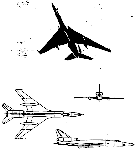
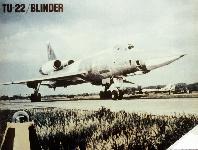
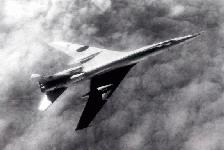
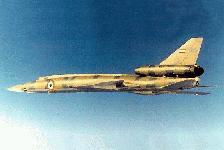
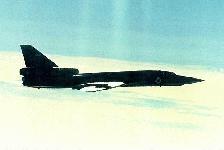
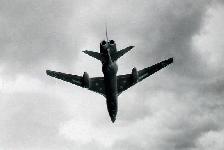

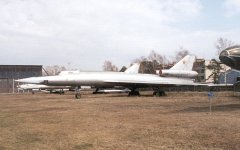
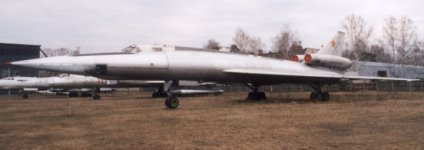
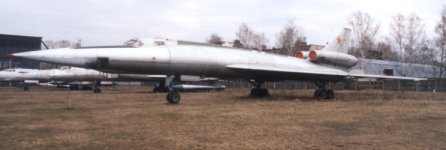
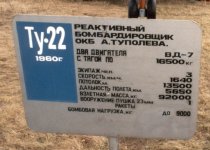
Sources and Resources
- Russian Strategic Nuclear Weapons, Pavel Podvig, ed., IzdAT, Moscow, 1998, 492 pp. (in Russian). Authors: Oleg Bukharin, Timur Kadyshev, Eugene Miasnikov, Pavel Podvig, Igor Sutiagin, Maxim Tarasenko, Boris Zhelesov
- Tu-22 ('105') by A.N.Tupolev ('Blinder')
- Tu-22 "Blinder" at Virtual Aircraft Museum at 'Novik'
- Tu-22, Tupolev 'Blinder'
- Tupolev Tu-22 'Blinder'
- Tupolev Tu-22 'Blinder-C' Pictures by Ken Duffey
- Tu-22R Blinder (photos by Sergei Burdin)
- "A History of Strategic Arms Competition 1945-1972" (U), Volume 3, A Handbook Of Selected Soviet Weapon and Space Systems, United States Air Force, June 1976. pgs 68-75



